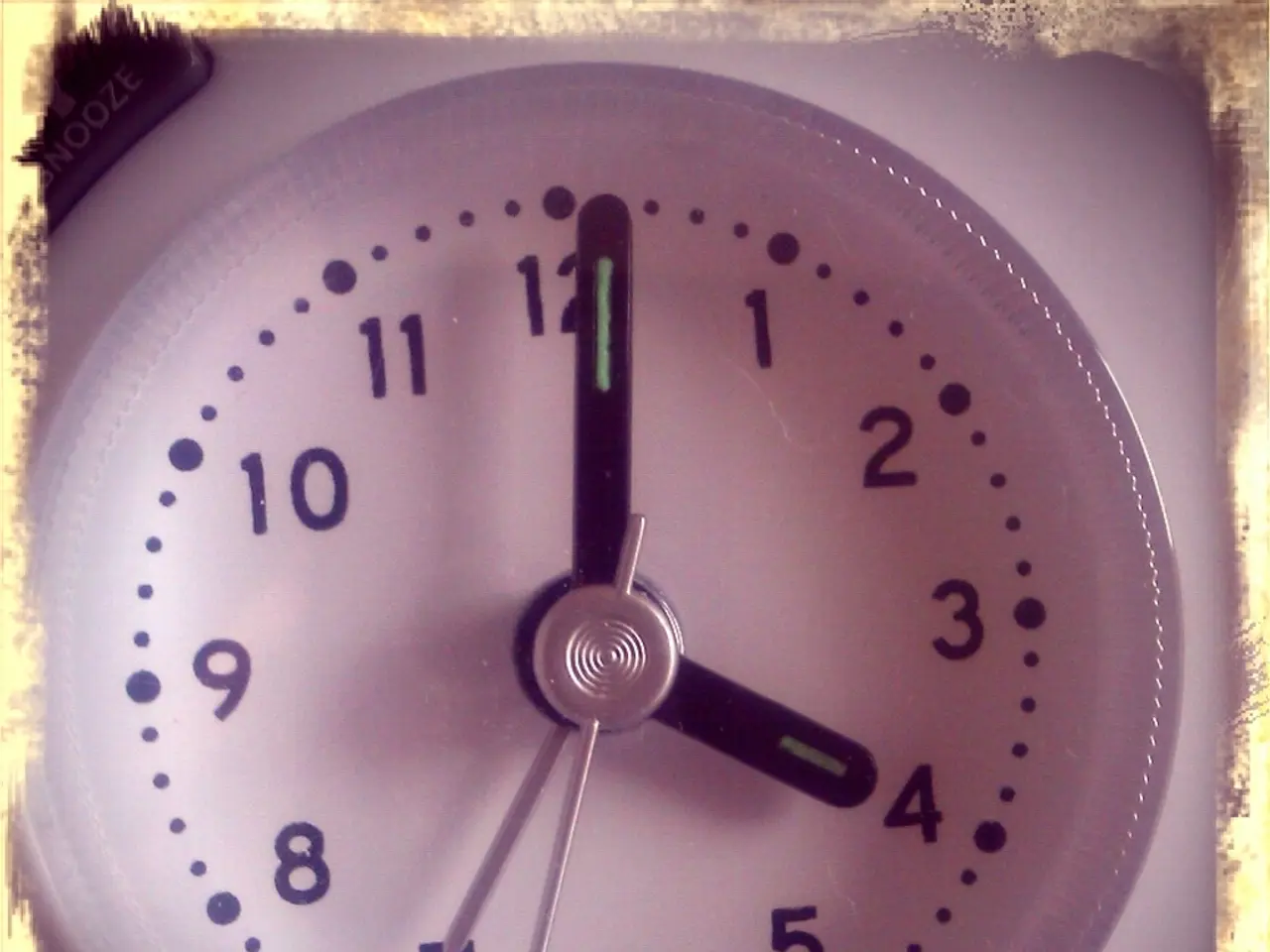AdjustingYour Mechanical Timepiece: Simpler Than You Might Imagine
Keeping your mechanical timepiece top-notch and accurate is all about understanding its mechanics and catering to its needs. Here's the lowdown on maintaining your clock's spot-on timing.
First, let's define the enemies of clockwork precision:
Neglect
Ignoring simple care can lead to your trusty timepiece losing its reliability as an accurate timekeeper. Locating it in sunny spots or near heat sources can cause premature aging and damage the movement. Transporting a weight-driven clock sans securing the weights can lead to damaged parts and shattered glass. Moving a pendulum clock without removing the pendulum can cause internal damage, and turning the hands backward should be avoided.
Friction
Each moving part of a clock needs to be in tiptop shape for optimal performance. Lubrication is crucial to prevent excessive friction and the wear that comes with it. Wear can lead to costly and time-consuming repairs, so it's best to inspect your clock's movement every couple of years, add oil if needed, and service the movement if you notice thick, dirty oil build-ups.
Environment
Changes in temperature and humidity will affect your clock's timekeeping rate. It's common to make seasonal adjustments to your clock. Clocks perform better in controlled home environments, but damp basements, window sills, bathrooms, areas above heating elements or vents, garages, and other humid spaces are a no-no for mechanical clocks.
Now, let's dive into regulating your mechanical clock and the effects of mainspring power on timekeeping:
Regulating your Mechanical Clock
Regulating a clock may mean making small adjustments to the length of the pendulum by means of a rate adjustment screw. Turning the rating screw clockwise shortens the pendulum, making it faster, and turning it counterclockwise lengthens it, making it slower. A full turn of the screw typically means adding or subtracting a minute per week.
Mainspring Power and Regulation
Winding a spring-driven clock provides the stored energy needed for the clock to run, which is released at a steady and controlled rate. A spring-driven clock tends to release most of its energy at the beginning of its wind cycle and releases less energy towards the end, which can make regulating more challenging compared to weight-driven clocks.
Neglect, friction, and environmental factors play a significant role in a clock's ability to keep accurate time. By ensuring proper maintenance, placing your clock in a location free from heat and humidity, and regularly checking for adequate lubrication, you can extend its lifespan, maintain its value, and enjoy dependable performance for years to come.
Vintage clocks, like mechanical ones, require special care to maintain their precision and longevity. Regularly inspect gadgets such as these early-era timepieces, adding oil where necessary, and making seasonal adjustments can prevent wear and tear caused by friction. Also, technology such as modern gadgets, including mechanical clocks, can be sensitive to changes in temperature and humidity, so they thrive in controlled home environments, avoiding damp basements, window sills, and other humid spaces.







